
We would like to introduce you to Benrus military watches issued to the US military.
There was a big difference in performance between the Benrus Type 1 and Type 2 and later models, and from then on American military watches came to be equipped with the Type 1 and Type 2 as standard.
Benrus military watches set the foundation for the performance of military watches that came afterwards.
The Beginnings of Benrus
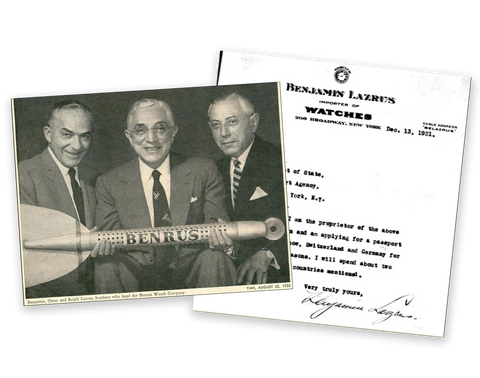
Benrus began as a family-run watch repair business in New York City in 1921.
"Oscar"
"Benjamin"
"Ralph."
The three brothers were immigrants from Romania who founded a company, and Benrus was born.
The name BENRUS is a combination of the first and last names of one of the three brothers, Benjamin Lazrus.
From the 16th century onwards, pocket watches were the standard form of clocks, but in the 1900s they became smaller and wristwatches with straps became mainstream.
The three brothers, who started their company around this time, noticed this and decided to manufacture affordable wristwatches for civilians.
This was the beginning of Benrus.
War and Benrath
During World War II, Benrus, like other watch makers of the time, produced watches for the military.
However, instead of wristwatches, they made timing devices for weapons and bombs.
Additionally, around this time Benrus was able to ship Swiss movements by sea via Lisbon, allowing it to manufacture and sell affordable wristwatches to civilians.
Postwar
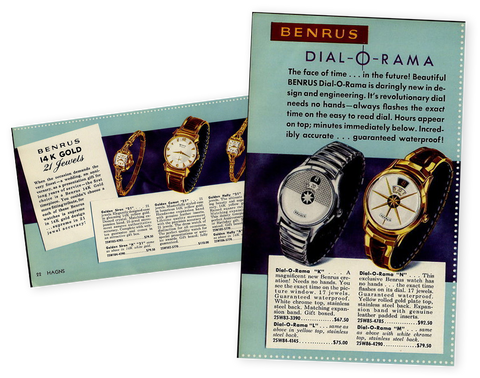
After the war, in the 1940s, Benrus produced only glamorous, fashionable watches.
The designs were all unique, flashy and stylish, such as "Embraceable," "Citation" and "Dial-o-Rama."
1950s
By the early 1950s, Benrus had surpassed Hamilton to become the third largest watch company in America.
In 1952, import duties on Swiss movements were increased.
This was a huge blow to Benrus, which relied heavily on Swiss-made movements at the time, but it was an advantage for Hamilton, which also used American-made movements.
Shortly after this, Benrus began buying shares in Hamilton, and by 1953 he owned 24 percent and had considerable influence.
Eventually, Hamilton, sensing this was a threat, sued Benrus for antitrust violations and won an injunction.
1960s and 1970s
Benrus manufactured military issue watches for the U.S. Army and Navy.
A military watch of unprecedented resistance has been born.
Military Watches
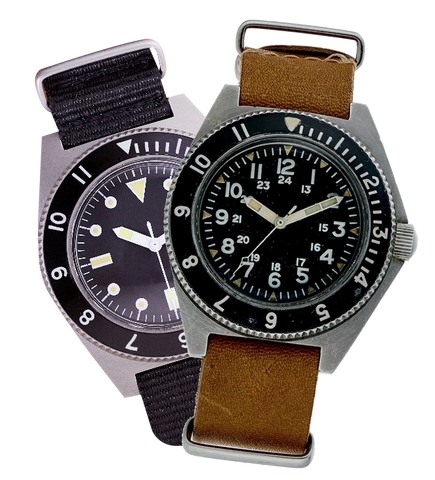
The Benrus Type 1 and Type 2 are some of the most collectible military dive watches from the 1970s.
These were issued only to elite US troops during the Vietnam War and only a small number were produced.
This was because after the Vietnam War, the military stopped issuing watches to all soldiers, and only issued them to those in special roles such as special forces.
Approximately 16,000 Type 1 and Type 2 were produced.

Type 1 and Type 2 (Mil-Spec MIL-W-50717) were manufactured to order from the Department of Defense.
With increased use by Special Forces, including US Navy UDT/SEALs, EOD, divers, Army Rangers, Green Berets and CIA operatives, there was a demand for a more accurate and durable dive watch.
It was equipped with water resistance to a depth of 1,200 feet, something never seen before the Type 1, and an automatic movement that could withstand shocks and heat.
Both versions have a one-piece steel case measuring 43mm wide and 16mm high, and this sturdy case and thick crystal on top provide unprecedented water, heat and shock resistance.
Both Type 1 and Type 2 were equipped with the automatic Benrus GS1D2 movement (ETA2620).
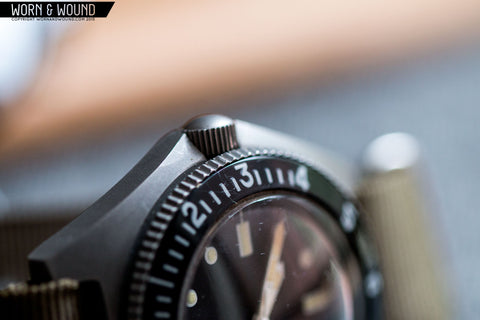
The bezel has deep grooves, making it easy to turn even when wearing gloves.
The Type 2 clock itself was the same construction, but the dial was slightly different and could show both standard and military time.
A very small number of Type 1s exist that do not have the military markings on the case back, but do have a serial number engraved on the case back.
This is said to be a prototype before it was put into military use.
Some people believe that the fact that this watch had no military markings saved his life and thus prevented the enemy from realizing he was an American, which has made this watch even more rare.
Both types were available in Class A and Class B versions, with Class A watches having tritium markers and hands, while Class B watches did not.
Class B was used in locations where there was equipment sensitive to even trace amounts of tritium (such as nuclear submarines).
Both types were produced between 1972 and 1980 and were never sold to civilians.
However, a reproduction of Type 1 is now on sale and can be used regularly.
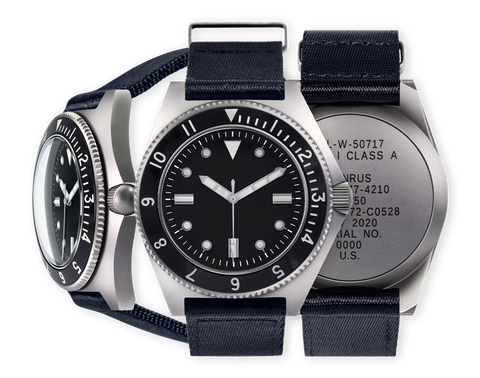
The current Type 1 is the same size as the original Type 1.
It is water resistant to 300m and has a domed sapphire crystal with AR coating.
Although it is not military specification, its simple and unique design is very popular.
It's interesting to think about the people who wore this watch while in active duty, what kind of missions they were assigned to, and what kind of dangers they faced when carrying out their missions.





